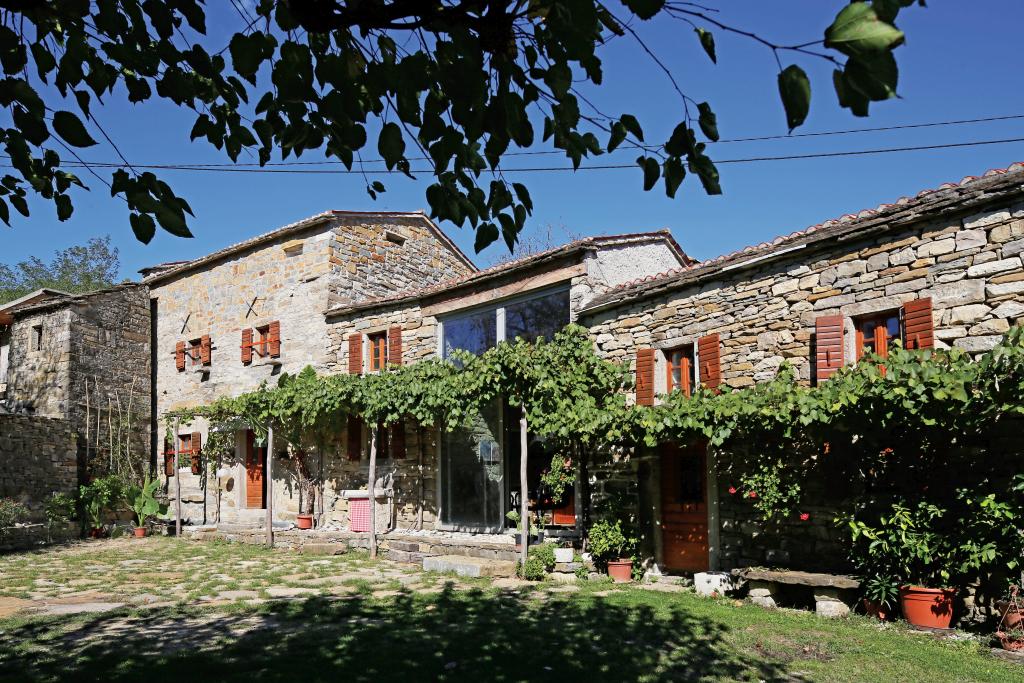
“Old buildings do not meet the standards of modern living, since the latter require plenty of light, due to the fast pace of our lives the home needs to be comfortable and suitable for fast use, with minimum effort,” argues architect Silvija Kajzer, whose projects include the renovation of a majestic old house called Pr Nanetovh built in the early 20th century in the settlement Matavun, which lies in the Škocjan Caves Regional Park.
By demolishing abandoned buildings, Slovenian countryside is “losing its authentic image, causing its inhabitants to lose the awareness about their unique identity in the globalised world”, claims Eva Prelovšek Niemelä, the author of an exhibition and panel called Renovation for Creative Tourism at the Month of Design series of events, which focuses on good examples of restoring and renovating countryside houses protected as cultural heritage and on innovative and functional transformation for its use in tourism.
According to the curator, a new trend has appeared especially in Scandinavian countries, where certain shops now sell used construction material. “This means old windows, old door, beams, all kinds of things that can be found while demolishing a building; and this trend will definitely reach Slovenia, which is why it’s good to mention it.”
Renovation pricier, but with a soul
The main reason why most architects hate renovation and why investors avoid it has one common denominator – the price. “In most cases, renovation is more expensive, but it has a soul that a new building cannot have,” believes architect Aleksandra Leban Meze, who designed and lead the renovation of the Smrekar homestead. The project was made possible by a highly motivated investor and plenty of patience, “which is already paying off”, since their capacities are already fully booked; the kitchen has even become too small for current needs.
The Smrekar homestead was built on the foundations of a completely crumbled hay rack. Wooden construction and characteristic stone walls have been preserved. Two new buildings were added to replace the old structure – tourist accommodation and a service centre. Most of the investment worth EUR 800,000 was financed by the investor while a part was co-funded by three different European funds.
Motivation for renovation mostly due to European and national government funds
“What usually levers renovation is systems of co-funding,” confirms architect and conservator Aleš Hafner. “When the system of co-funding was active, it was much easier for the investors to decide in favour of renovation. But by renovating old houses, we’re also preserving cultural heritage, which is why money cannot be our sole criterion.” Owners of the Juvan House at Luče had been conscious about the significance of architectural heritage and cultural artisanship from the start, says Hafner, point out another model example. The old farmhouse is now a museum that boasts original paintings and rich details. If plans work out, the upper two floors will be turned into apartments and guest rooms.
“When one house gets renovated, a few of the other villagers also show interest to renovate their home,” explains Aleš Hafner, who also helped renovate quite a few old building, especially in Upper Carniola. According to Hafner, old Slovenian farmhouses are extremely popular especially with tourists from northern Europe, who are more used to modern architecture. One of such examples is the Cvetje v jeseni (‘Flowers in autumn’) tourist farm in Visoko near Škofja Loka.
Renovating the buildings has an impact on all villagers
Positive effects of bringing old buildings back to life have been studied by Kajzer. The Pr Nanetovh house in Matavun near Divača, which the investor – Škocjan Caves Park – decided to turn into a promotional congress centre, has had a positive influence on the local population. “For example, the nearest neighbour has apartments and rooms, others have guesthouses, which is why this activity fit well with the activities of the people living in the vicinity.”
Renovating 700 square metres of the nearly one-hundred-year-old house, which used to serves as a guesthouse for well-off guests, cost a little over EUR 800,000. “This cost is by no means realistic, since it went out to public tender. As we all know, the tender with the lowest price is chosen,” warns Kajzer. Construction works and paintings were financed by the Ministry of Culture.
However, rather than focusing on the interior design of the house, the architect and her co-workers had to focus on restoration. The building was in very poor condition: the cellar was often flooded, the beams were full of worms, the walls had to be repaired, the walls restored. “This was a demanding renovation, which included numerous restoration works, but we’re all proud of the results … the nearby locals, too,” emphasizes Kajzer. The building is adapted to the needs of disabled people, there’s a small conference room, and the attic hosts a library as well as an archive with materials on the building itself and books on protection of natural and cultural heritage worldwide.
Katja Štok, MMC; translated by K. Z.


































































